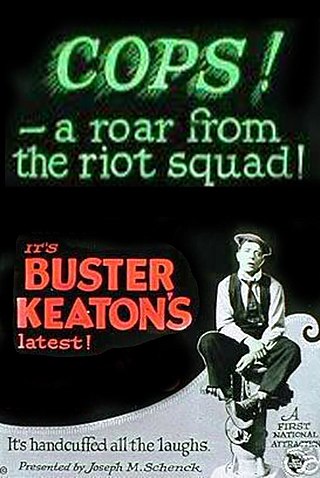
Cops is a 1922 American two-reel silent comedy film about a young man who accidentally gets on the bad side of the entire Los Angeles Police Department during a parade and is chased all over town. It was written and directed by Edward F. Cline and Keaton. This very Kafka-esque film was filmed during the rape-and-murder trial of Fatty Arbuckle, a circumstance that may have influenced the short's tone of hopeless ensnarement.

Jam Session is a 1942 short film, directed by Josef Berne, which shows Duke Ellington and his orchestra performing "C Jam Blues".

Lambchops is an 8-minute American comedy Vitaphone short subject released in October 1929, which depicts a vaudeville performance by Burns and Allen of the comedy routine "Lambchops" written by Al Boasberg. The work's copyright was renewed in 1957, and it entered the American public domain on January 1, 2025.
Little Miss Marker is an American pre-Code 1934 comedy-drama film directed by Alexander Hall. It was written by William R. Lipman, Sam Hellman, and Gladys Lehman after a 1932 short story of the same name by Damon Runyon. It stars Shirley Temple, Adolphe Menjou and Dorothy Dell in a story about a young girl held as collateral by gangsters. It was Temple's first starring role in a major motion picture and was crucial to establishing her as a major film star. It was inducted into the National Film Registry by the Library of Congress in 1998 and has been remade several times.

The Living Desert is a 1953 American nature documentary film that shows the everyday lives of the animals of the desert of the Southwestern United States. The film was written by James Algar, Winston Hibler, Jack Moffitt (uncredited) and Ted Sears. It was directed by Algar, with Hibler as the narrator and was filmed in Tucson, Arizona. The film won the 1953 Oscar for Best Documentary.
Tulips Shall Grow is a 1942 American animated short film in the Puppetoons series, directed by George Pal and starring Rex Ingram and Victor Jory. It was released by Paramount Pictures and originally photographed in 3-strip Technicolor. It later became the black-and-white edition by National Telefilm Associates.
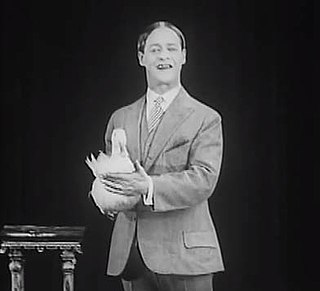
Theodore Case Sound Test: Gus Visser and his Singing Duck, also known as Gus Visser and His Singing Duck, is a 1925 American short musical comedy film starring vaudeville performer Gus Visser. The short is an early sound film, directed by Theodore Case while perfecting his variable density sound-on-film process. Case began working on his sound film process at the Case Research Lab in Auburn, New York, in 1921.
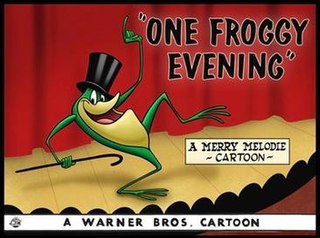
One Froggy Evening is a 1955 American Technicolor animated musical short film written by Michael Maltese and directed by Chuck Jones, with musical direction by Milt Franklyn. The short, partly inspired by a 1944 Cary Grant film entitled Once Upon a Time involving a dancing caterpillar in a small box, marks the debut of Michigan J. Frog: an anthropomorphic frog with a talent for singing and dancing that he demonstrates for no one except whoever possesses the box wherein he resides. This popular short contained a wide variety of musical entertainment, with songs ranging from "Hello! Ma Baby" and "I'm Just Wild About Harry", two Tin Pan Alley classics, to "Largo al Factotum", Figaro's aria from the opera Il Barbiere di Siviglia. The short was released on December 31, 1955, as part of Warner Bros.' Merrie Melodies series of cartoons.

The Kiss is an 1896 short film, and was one of the first films ever shown commercially to the public. Around 18 seconds long, it depicts a re-enactment of the kiss between May Irwin and John Rice from the final scene of the stage musical The Widow Jones. The film was directed by William Heise for Thomas Edison. The film was produced in April 1896 at the Edison Studios of Edison, the first film studio in the United States. At the time, Edison was working at the Black Maria studios in West Orange, New Jersey.
The City is a pioneering short documentary film from 1939 that contrasts the problems of the contemporary urban environment with the superior social and physical conditions that can be provided in a planned community. It was directed and photographed by Ralph Steiner and Willard Van Dyke based on a treatment by Lewis Mumford, which was in turn based on an outline by Pare Lorentz. Aaron Copland wrote the musical score, and Morris Carnovsky provided the narration.
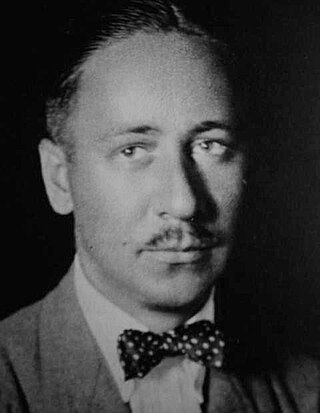
Robert Charles Benchley was an American humorist best known for his work as a newspaper columnist and movie actor. From his beginnings at The Harvard Lampoon while attending Harvard University, through his many years writing essays and articles for Vanity Fair and The New Yorker and his acclaimed short films, Benchley's style of humor brought him respect and success during his life, from his peers at the Algonquin Round Table in New York City to contemporaries in the burgeoning film industry.
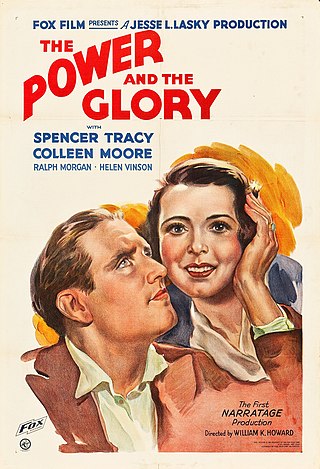
The Power and the Glory is a 1933 pre-Code film starring Spencer Tracy and Colleen Moore, written by Preston Sturges, and directed by William K. Howard. The picture's screenplay was Sturges' first script, which he delivered complete in the form of a finished shooting script, for which he received $17,500 and a percentage of the profits. Profit-sharing arrangements, now a common practice in Hollywood, were then unusual and gained Sturges much attention.

One Week is a 1920 American two-reel silent comedy film starring Buster Keaton, the first independent film production he released on his own. The film was written and directed by Keaton and Edward F. Cline, and runs for 19 minutes. Sybil Seely co-stars. The film contains a large number of innovative visual gags largely pertaining to either the house or to ladders.
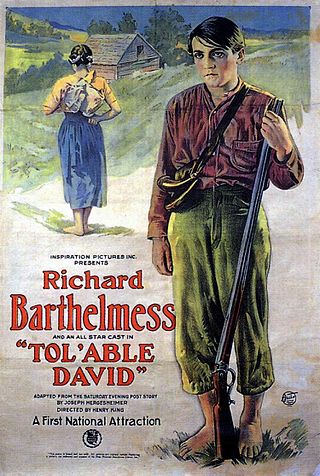
Tol'able David is a 1921 American silent film based on the 1917 Joseph Hergesheimer short story of the same name. It was adapted to the screen by Edmund Goulding and directed by Henry King for Inspiration Pictures. A rustic tale of violence set in the Allegheny Mountains of eastern West Virginia, it was filmed in Blue Grass, Virginia, with some locals featured in minor roles.

(Sir) Charles Chaplin (KBE) (1889–1977) was an English internationally renowned Academy Award-winning actor, comedian, filmmaker and composer who was best known for his career in Hollywood motion pictures from his debut in 1914 until 1952, he however subsequently appeared in two films in his native England. During his early years in the era of silent film, he rose to prominence as a worldwide cinematic idol renowned for his tramp persona. In the 1910s and 1920s, he was considered the most famous person on the planet.
The Treasurer's Report (1928) is a comedy sketch, made into a short film, written and performed by Robert Benchley. The film, made in the then-new Fox Movietone, documents an assistant treasurer of an organization struggling to present its yearly report. This was the first of Benchley's 46 comedy short films, with six made for Fox, one each for Universal Pictures and RKO Radio Pictures, 29 for Metro-Goldwyn-Mayer, and nine for Paramount Pictures.

The Jenkins Orphanage, now officially known as the Jenkins Institute For Children, was established in 1891 by Rev. Daniel Joseph Jenkins in Charleston, South Carolina. Jenkins was a businessman and Baptist minister who encountered street children and decided to organize an orphanage for young African Americans.

The National Film Registry (NFR) is the United States National Film Preservation Board's (NFPB) collection of films selected for preservation, each selected for its historical, cultural and aesthetic contributions since the NFPB's inception in 1988.
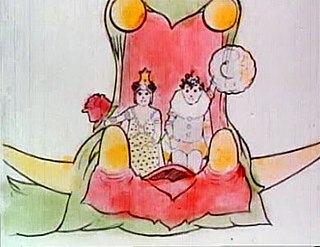
Winsor McCay: The Famous Cartoonist of the N.Y. Herald and His Moving Comics, more commonly known as Little Nemo, is a 1911 silent animated short film by American cartoonist Winsor McCay. One of the earliest animated films, it was McCay's first, and featured characters from McCay's comic strip Little Nemo in Slumberland. Its expressive character animation distinguished the film from the experiments of earlier animators.















